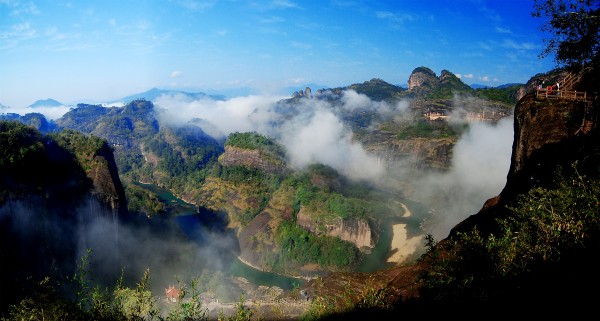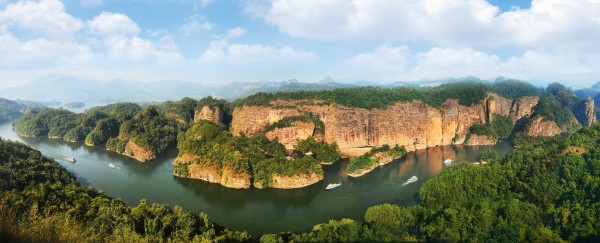Fujian Natural Conditions and Geography


Fujian Province is called Min for short. Situated on the southeast coast of the Chinese mainland, the province faces Taiwan Straits to the east, and borders Jiangxi Province to the west, Guangdong Province to the south, and Zhejiang Province to the north.
An early record of Fujian can be found in The Classic of Mountains and Seas, an ancient compilation of China’s mythic geography and myth, which states that Fujian sits in the sea. Fujian covers a land area of 124,000 sq. km., and a sea area of 136,000 sq. km. As one of the major marine economies in China, it boasts the second longest coastline that runs as long as 3,752 km, with a straight length of 535 km and a curving rate of 1:7.01, ranking first in the country. There are 2,214 islands in the province, and the Pingtan Island is the biggest. The total number of harbors amounts to 125, among which are 22 deepwater harbors and 7 natural harbors that allow the free access of 50,000-tonnage ships, taking up 1/6 of the national figure. The coastline resources provide us with the capacity to build 80 berths suitable for accommodating 200,000-tonnage and above ships. The sea area good for tidal power generation totals 3,000 sq. km. And the exploitable installed capacity of tidal energy reaches 10.33 million kilowatts, accounting for 49.2% of the national total and ranking first in China.
Located in the subtropical oceanic monsoon climate area, Fujian is lucky enough to have the mountain ranges in the northwest to ward off the cold winds in winter, and to have the sea breeze coming from the southeast to regulate the climate. Therefore, most part of the province suffer less the freezing cold in winter and the sweltering heat in summer, with the largest amount of rainfall in the country.
Endowed with favorable natural conditions, Fujian is one of the four major forest regions in China, and enjoys the fame of “Green treasure house in the south”. The woodland accounts for 65.95% of the total area with stocking volume standing at 608 million cubic meters, and bamboo forest 993,100 hectares, all ranking first in China. The province falls into the front ranks in biodiversity in the country, and witnesses the survival of many rare plants of the cretaceous period and the Tertiary period, such as gingkgo, pseudolarix and podocarpus macrophyllus.
Situated in one of the major metallogenic belts around the Pacific Rim, Fujian is a region rich in natural resources. By the end of 2015, 118 solid mineral deposits are registered in the records, of which the deposits of 27 types rank among the top 5 nationwide. The Zijinshan Gold Mine was rated by China Gold Association as the biggest gold mine across the country.
Boasting spectacular mountains and vast oceans, Fujian has long been renowned as the “Mountainous State in the southeast”, with Wuyi Mountains in the north, Qingyuan Mountain in the south, Taimu Mountain in the east, Guanzhai Mountain in the east and Daiyun Mountain in the midst. Each of these mountain ranges presents a picturesque landscape. Moreover, the whole province abounds with rivers and lakes, with Min River, Jiulong River, Jin River, Ting River and Jiaoxi River constituting the five major river systems in Fujian. And the numerous beautiful lakes, such as Taining Golden Lake, Xiamen Yundang Lake and Gutian Cuiping Lake shine in the land of Fujian like bright pearls.



 闽公网安备 35020302000788号
闽公网安备 35020302000788号